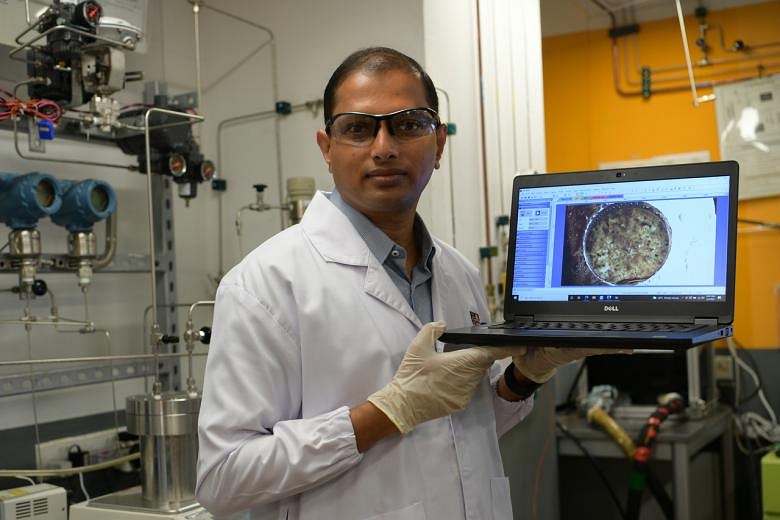SINGAPORE – Researchers at the National University of Singapore (NUS) have found a new way to accelerate the rate at which carbon dioxide (CO2) is sucked out of the atmosphere and stored under the ocean floor, in the goal of mitigating the most severe impacts of climate change.
This comes as Singapore recently set a goal of reaching net zero emissions by mid-century, highlighting these carbon capture and storage technologies as a tool to reduce CO2 emissions.
The ongoing project will be one of 12 funded through the Low Carbon Energy Research Funding Initiative – where the government has earmarked $55 million to study capture, use and storage hydrogen and carbon.
Carbon capture technology works by capturing the CO2 produced by large emitters such as power generation and petrochemical companies, compressing it into liquid form, and then injecting it deep underground for storage.
While many advances have been made in storing carbon in underground rock formations or in depleted oil and gas deposits, the NUS team found that CO2 can be stored under ocean floor sediments and kept stable. by the pressure created by the sea water.
Earth’s lithosphere – its rocky outer part – and the deep ocean are two great carbon reservoirs on the planet, due to their ability to store carbon for millions of years, through a series of chemical processes.
They play a huge role in climate regulation, as it means that CO2 will not escape into the atmosphere and trap heat, contributing to the climate crisis.
Professor Praveen Linga of the NUS Department of Chemical and Biomolecular Engineering, told the Straits Times that when liquid CO2 is injected into the ocean, it reacts with the water to form ice-like substances called hydrates.
The change usually occurs at a temperature just above the freezing point of water at a certain pressure and can store up to 184 m3 of CO2 in each m3 of hydrate.
Using a specially designed laboratory reactor to mimic conditions on the ocean floor – where temperatures vary between 2 deg C and 6 deg C, and pressures are a hundred times greater than at sea level – the NUS team was able to show that the hydrates remain stable for up to 30 days.
“Creating a large-scale reactor capable of maintaining such conditions was a challenge and is one of the reasons why experiments to test the stability of CO2 hydrates were previously not possible,” said said Professor Linga.
The NUS team overcame this challenge by using an in-house designed pressure vessel lined with a bed of silica sand, which mimicked ocean sediments.
Asked about the possibility of CO2 hydrates melting due to warming oceans as a result of climate change, Professor Linga said it would take a 9°C increase in ocean temperatures for CO2 hydrates to dissociate, releasing CO2 into the oceans.
He noted that’s “far more” than the 2 degrees Celsius above pre-industrial levels of warming that the world has been trying to avoid.




